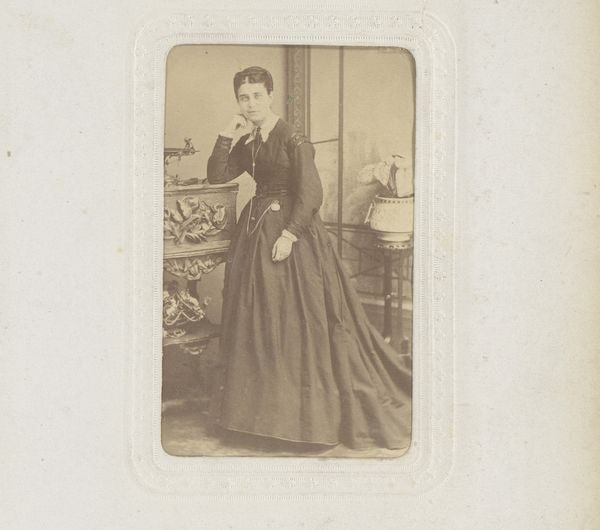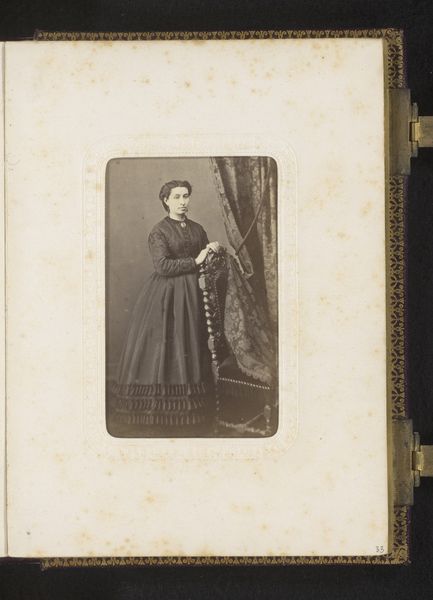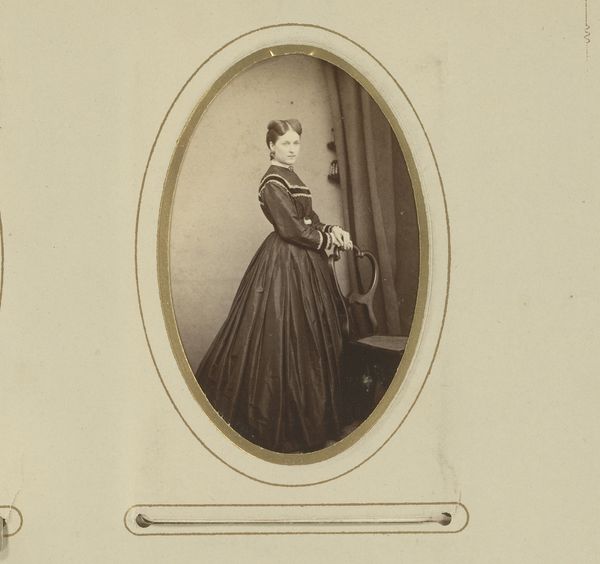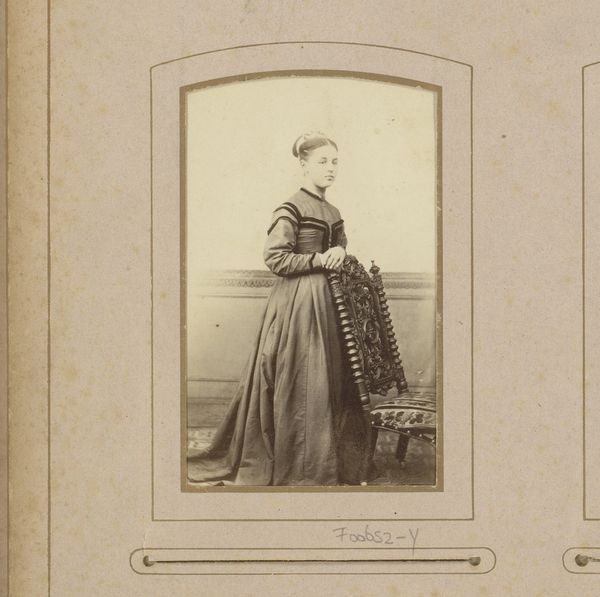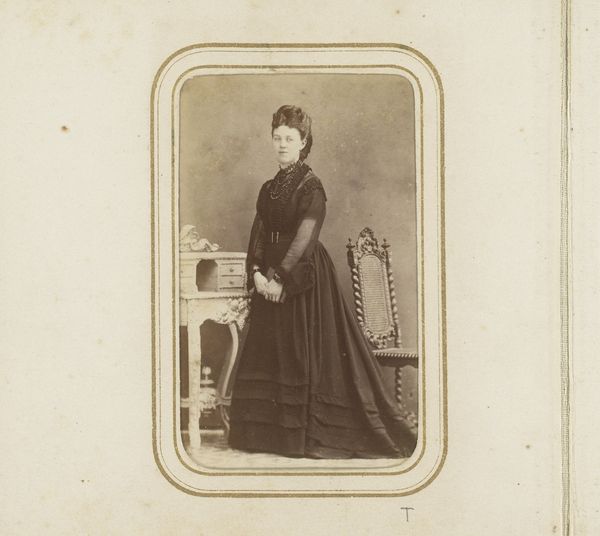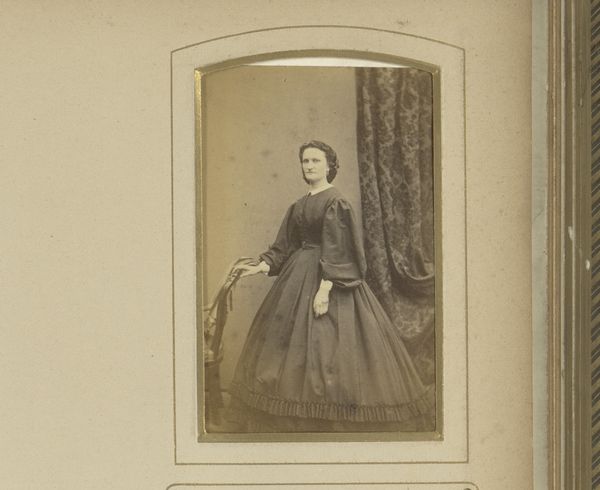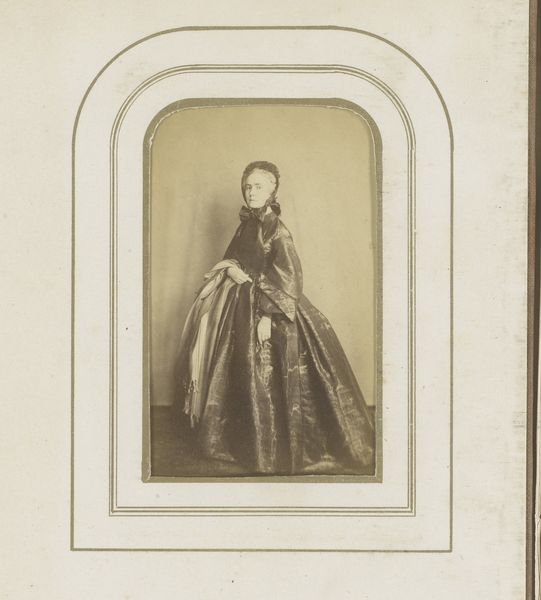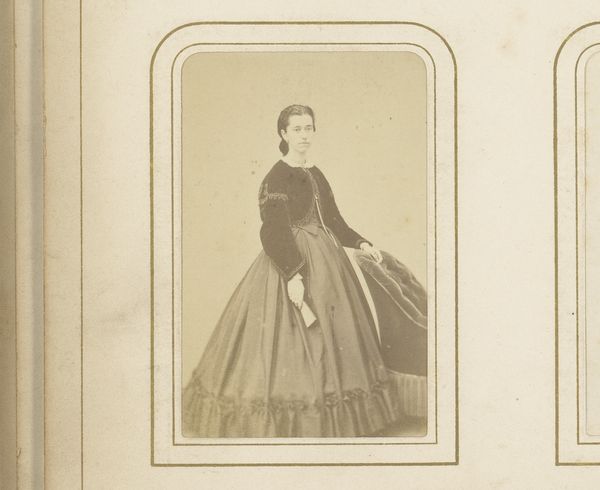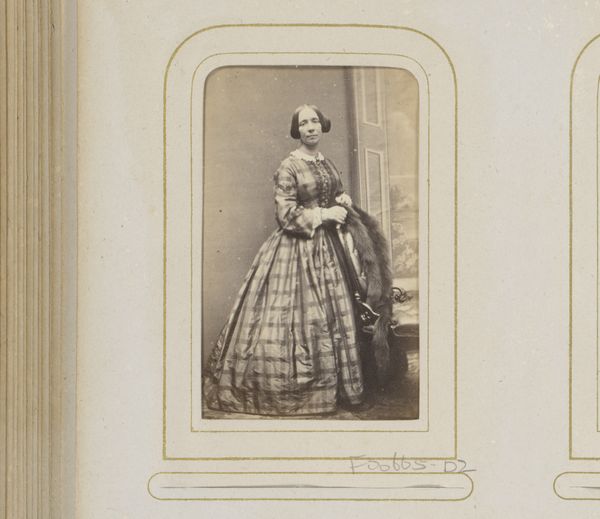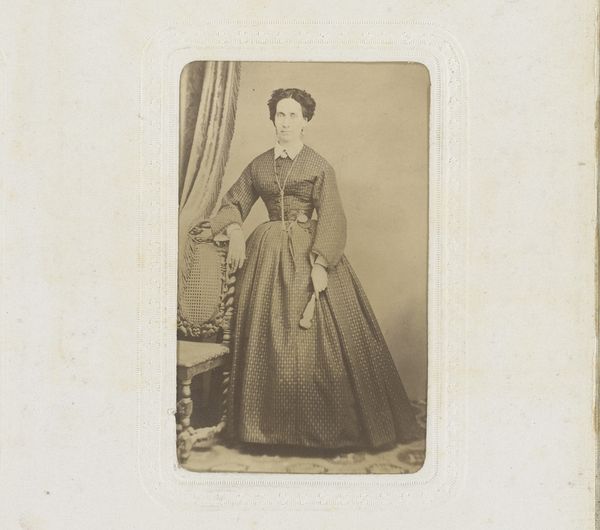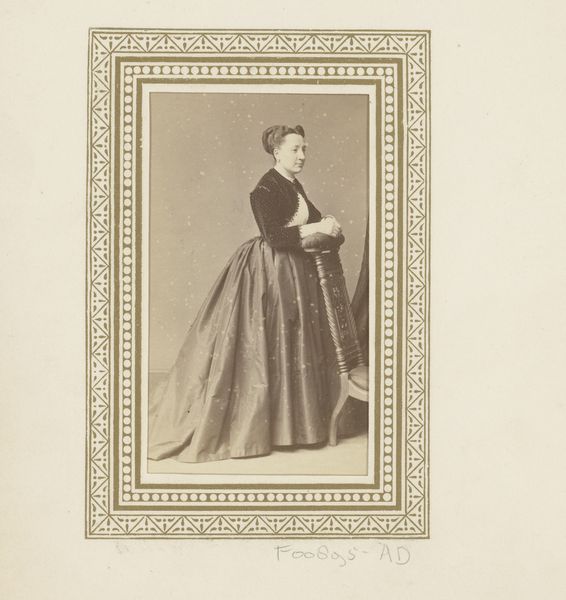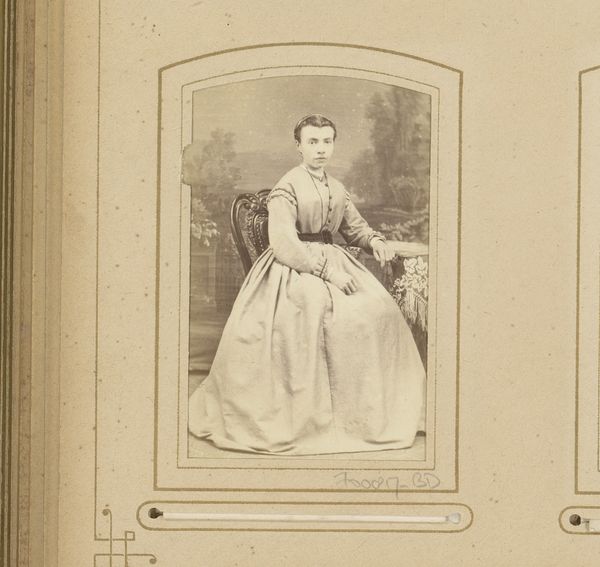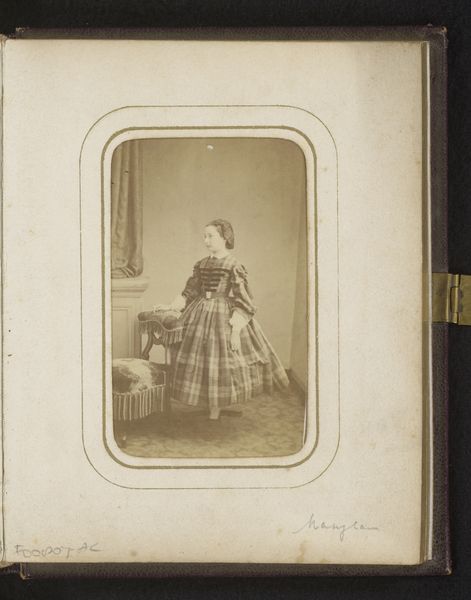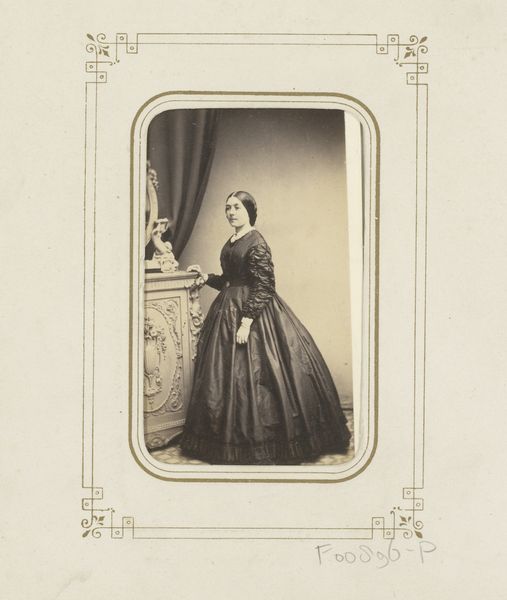
photography, albumen-print
#
portrait
#
photography
#
historical photography
#
historical fashion
#
19th century
#
albumen-print
#
realism
Dimensions: height 82 mm, width 50 mm
Copyright: Rijks Museum: Open Domain
Curator: My first impression? A melancholic whisper. All those layers of dark fabric seem to almost weigh her down. Editor: This albumen print, "Portret van een vrouw met lange ketting bij een stoel"—"Portrait of a Woman with a Long Necklace by a Chair"—was created sometime between 1858 and 1873 by Godfried de Jong. These photographic portraits from the 19th century always get me wondering… Who were these people? Curator: Right? She seems trapped. Stiff pose, heavy dress, staring… almost accusingly? Her reliance on the chair betrays weariness. Maybe she’s just bored—a prisoner of fashion! Editor: It's interesting you say that because in that era, jewelry was like a second skin that communicated so much about the person, and it gave them status. This particular long chain would signify something. We can infer this might have meant high status, so maybe less of a prisoner and more the owner of the jail... symbolically! Curator: Maybe! Or maybe the chain is just, well, a chain! Binding her to social expectations. But those big skirts though! Think of all the things you could hide under there. The rebellious spirit barely contained, perhaps. Editor: I suppose both notions aren't mutually exclusive—and the photographic portrait was about establishing oneself but within very fixed notions of representation. These albumen prints gave that distinctive sepia-toned cast, and were so labor-intensive to create, demanding absolute stillness from the sitter... but let's not get bogged down with technical details! What symbols do *you* see? Curator: Well, the chair! She's almost using it to hold herself up, suggesting strength and frailty combined, doesn’t it? As for the "historical fashion"—I love to see it for what it *truly* is: pure theatre! I guess both could coexist... Editor: It seems there’s a shared somber feeling hovering between realism and symbolism. What initially reads as straightforward record hints at deeper cultural themes of duty, status, and even resistance, which for me, gives photography meaning as both an art form and a kind of historical document. Curator: Absolutely! An era captured, yes, but more importantly: an unspoken story, just begging to be told. Editor: Right, something about a specific period, and a specific person is always able to evoke, to represent, the whole of humanity.
Comments
No comments
Be the first to comment and join the conversation on the ultimate creative platform.
